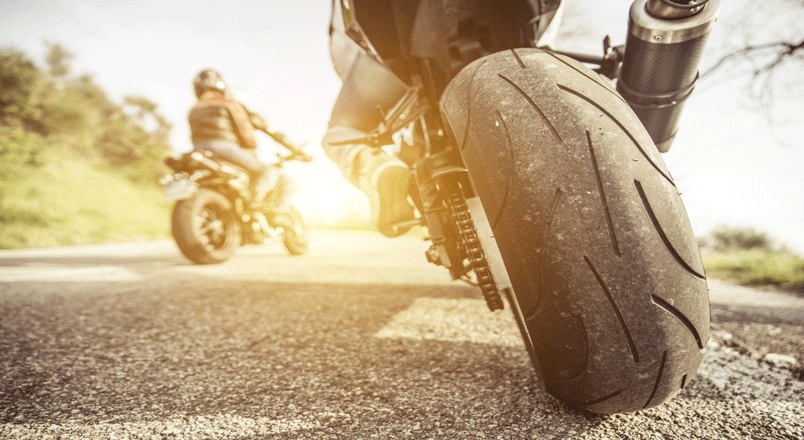Ask any motorcyclist; riding a motorcycle is different
from a car. Not least of which climatic elements are a significant hindrance,
anything that distracts the rider such as too hot, too cold, water coming
through their gear, visibility in low sun, condensation from breath or
rain on the visor are all factors that can draw the attention of the rider
from the road.
Then you have the factors of the road surface, a pot hole
in a car can be shocking to the driver if not seen, but to a motorcyclist
it can be a significantly destabilising event. Other issues are metal
grids and white lines become slippery in the wet, gravel and dirt on the
road from farm vehicles can be like riding on ice, so needless to say
a motorcycle rider has to give 100% concentration to the road, the environment
and other road users at all times.
But that is not all. There is a part of the brain that is
called the Amygdala. It is the brains emotional area responsible for seeing,
hearing, smell and touch. However it is also responsible for "fight
or flight" syndrome. At times of shock or surprise it causes the
rider to cry out, muscles tense, breathing changes and their gaze will
drop to approx 25mtrs. At this point the rider has effectively frozen,
just like a "dear in the headlights".
Now imagine the rider is going into a bend. There is a broken
down vehicle in the motorcyclist's path, but he can't see it until he
is banked over mid corner. On realising the danger the riders Amygdala
takes over, the biker is now ridged, transfixed. The next reaction all
too often will be go for the brakes, the motorcycle stands up straight
and the bikers is launched either into a hedge or oncoming vehicle.
For the everyday rider no matter how good the rider is, this
situation breaks all possible thought and control, it invariably leads
to disaster. So the avoidance of such issues should be the primary concern
for the motorcyclist.
One the track, professional racers practice getting themselves
into this area of the brain. Through practice it is possible to resolve
a reflex out of danger. In a similar situation to that of the road rider
above, the practiced professional race rider will not tense up, will avoid
the brakes, bank yet further by using additional countersteer, taking
control of the motorcycle and ultimately not crashing.
To many, motorcycling is a hobby not a means of transport.
Statistics show one of the most at risk groups are those that ride 600cc
or more, male, over the age of 35, riding on a dry sunny weekend day and
very often the accident reports indicate only the single vehicle involved.
What the statistics often don't show is the behaviour of
the rider. It won't say what the state of mind the motorcyclist is in,
are they stressed, are they angry, is their attention on the road or elsewhere.
Riders will tell you that there is peer pressure amongst
groups of riders to keep up or to overtake, or just to go fast out of
pure bravado. For some riders risk taking becomes the norm, a badge of
honour. Not un-surprisingly the same individual, in the family car on
the way to work, will not drive in the same manor.
Personality and behaviour on a motorcycle are amplified exponentially
over that of a car. With some road going motorcycles having a similar
power to weight retio of an F1 car, how the rider uses his bike is fundamental
to the avoidance of a collision.
Roadcraft is a very good way for riders to improve their
riding skills, but riders should be aware that evidence states that riders
tend to suffer the illusion of overestimated ability.
The answer is for the biker to search inwards and define
their own ability, use Roadcraft as a means of avoiding the Amygdala part
of the brain (no surprises) and find the level of risk that they are happy
with and not let others push them into going beyond that limit.
|



